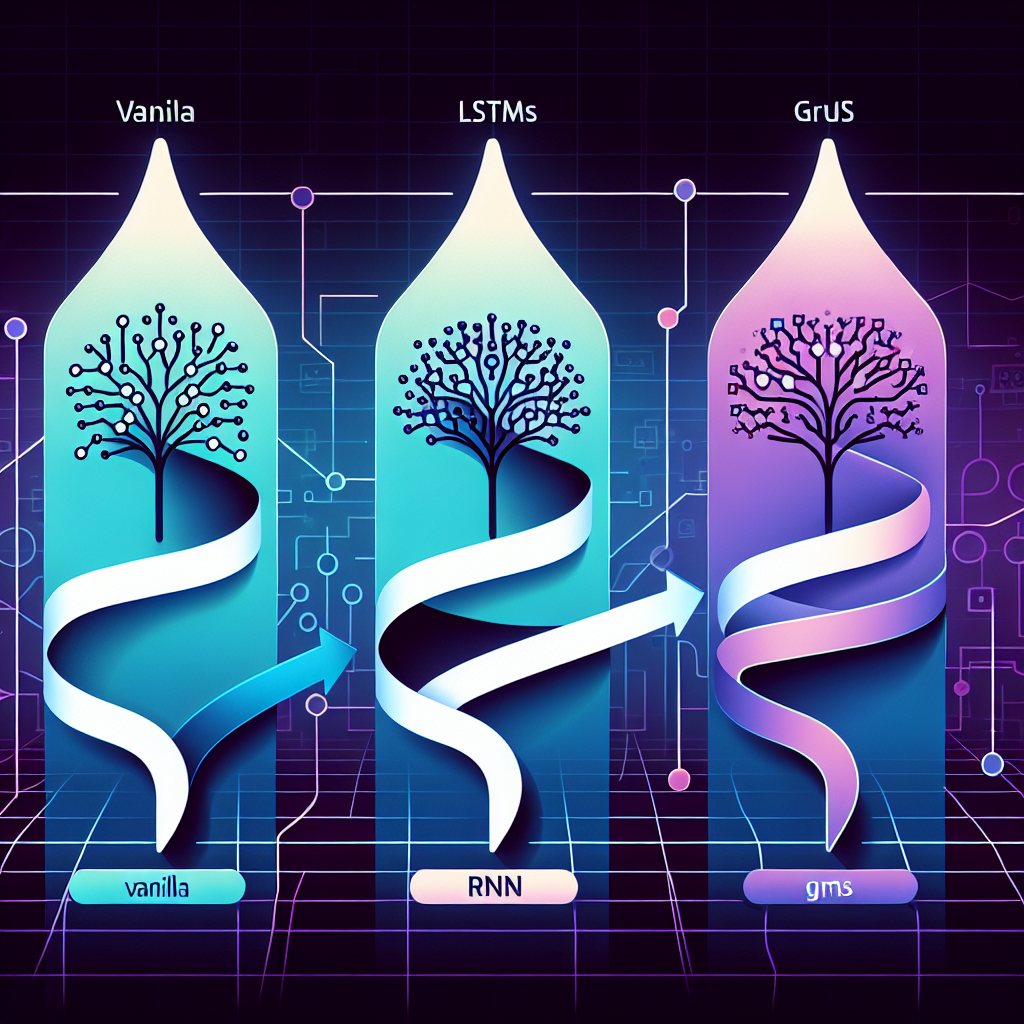Your cart is currently empty!
The Evolution of Recurrent Neural Networks: From Vanilla RNNs to LSTMs and GRUs

Recurrent Neural Networks (RNNs) have become a popular choice for tasks that involve sequential data, such as speech recognition, language modeling, and machine translation. The ability of RNNs to capture temporal dependencies makes them well-suited for these kinds of tasks. However, the vanilla RNNs have some limitations that can hinder their performance on long sequences. To address these limitations, more sophisticated RNN architectures, such as Long Short-Term Memory (LSTM) and Gated Recurrent Unit (GRU), have been developed.
The vanilla RNNs suffer from the vanishing gradient problem, which occurs when the gradients become too small during backpropagation, making it difficult for the network to learn long-term dependencies. This problem arises because the gradients are multiplied at each time step, causing them to either vanish or explode. As a result, vanilla RNNs struggle to capture long-range dependencies in the data.
LSTMs were introduced by Hochreiter and Schmidhuber in 1997 to address the vanishing gradient problem in vanilla RNNs. LSTMs have a more complex architecture with an additional memory cell and several gates that control the flow of information. The forget gate allows the network to decide what information to discard from the memory cell, while the input gate decides what new information to store in the memory cell. The output gate then controls what information to pass on to the next time step. This gating mechanism enables LSTMs to learn long-term dependencies more effectively compared to vanilla RNNs.
GRUs, introduced by Cho et al. in 2014, are a simplified version of LSTMs that also aim to address the vanishing gradient problem. GRUs combine the forget and input gates into a single update gate, which controls both the forgetting and updating of the memory cell. This simplification results in a more computationally efficient architecture compared to LSTMs while still achieving similar performance. GRUs have gained popularity due to their simplicity and effectiveness in capturing long-term dependencies in sequential data.
In conclusion, the evolution of RNN architectures from vanilla RNNs to LSTMs and GRUs has significantly improved the ability of neural networks to model sequential data. These more sophisticated architectures have overcome the limitations of vanilla RNNs and are now widely used in various applications such as language modeling, speech recognition, and machine translation. With ongoing research and advancements in RNN architectures, we can expect further improvements in capturing long-term dependencies and enhancing the performance of sequential data tasks.
#Evolution #Recurrent #Neural #Networks #Vanilla #RNNs #LSTMs #GRUs,recurrent neural networks: from simple to gated architectures

Leave a Reply